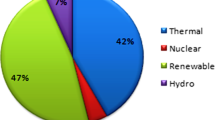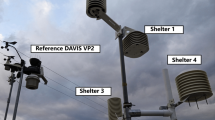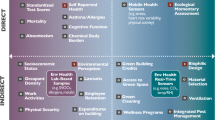Abstract
Using light shelves (LSs) is one of the passive-enhancement methods for energy saving and providing better thermal comfort conditions of the building users. The goal of this research is to create a consistent daylight environment that improves the visual and thermal comfort of users in buildings. Comfort effects on the four fronts of a building (in the Pars residential complex of Mashhad city in Iran as a case study) are investigated. Five types of LSs are suggested for improving the building’s thermal and visual conditions. Then, the illuminance analysis is performed for the building with and without the LSs. Horizontal and vertical LSs are considered in building to enhance visual quality and uniformity of daylight in the building space. According to the highest and lowest light intensity in the investigated spaces, the LS that provides optimal visual conditions for space is selected. Then, the role of optimum LS in thermal comfort and energy indicators (heating, cooling, and electricity) has been investigated and compared with the base situation. Analyzing the results reveals that using the optimal LS causes an annual average improvement of 18%, 11%, and 7% in the demand for heating, cooling, and electricity, respectively, of the building throughout the year.


















Similar content being viewed by others
References
Muhammad-Sukki F, Abu-Bakar SH, Ramirez-Iniguez R, McMeekin SG, Stewart BG, Sarmah N, Mallick TK, Munir AB, Siti HMY, Rahim RA (2014) Mirror symmetrical dielectric totally internally reflecting concentrator for building integrated photovoltaic systems. Appl Energy 113:32–40
Liu C, Xu W, Li A, Sun D, Huo H (2019) Energy balance evaluation and optimization of photovoltaic systems for zero energy residential buildings in different climate zones of China. J Clean Prod 235:1202–1215
Yousefi M, Hajizadeh A, Norbakhsh Soltani M, Hredzak B (2020) Predictive home energy management system with photovoltaic array. IEEE Trans Ind Inform, Heat Pump Plug-in Electr Veh. https://doi.org/10.1109/TII.2020.2971530
Fathabadi H (2014) Ultra high benefits system for electric energy saving and management of lighting energy in buildings. Energy Convers Manag 80:543–549
Harkouss F, Fardoun F, Henry Biwole P (2018) Passive design optimization of low energy buildings in different climates. Energy 165:591–613
Chen X, Yang H (2018) Integrated energy performance optimization of a passively designed high-rise residential building in different climatic zones of China. Appl Energy 215:145–158
Tushar Q, Bhuiyan M, Sandanayake M, Zhang G (2019) Optimizing the energy consumption in a residential building at different climate zones: towards sustainable decision making. J Clean Prod 233:634–649
Ascione F, Bianco N, Maria Mauro G, Ferdinando Napolitano D (2019) Building envelope design: Multi-objective optimization to minimize energy consumption, global cost and thermal discomfort. Application to different Italian climatic zones. Energy 174:359–374
Sharp F, Lindsey D, Dols J, Coker J (2014) The use and environmental impact of daylighting. J Clean Prod 85:462–471
Alhuwayil WK, Mujeebu MA, Algarny AMM (2019) Impact of external shading strategy on energy performance of multi-story hotel building in hot-humid climate. Energy 169:1166–1174
Fasi MA, Budaiwi IM (2015) Energy performance of windows in office buildings considering daylight integration and visual comfort in hot climates. Energy Build 108:307–316
Kota S, Haberl JS, Clayton MJ, Yan W (2014) Building information modeling (BIM)-based daylighting simulation and analysis. Energy Build 81:391–403
Xue P, Li Q, Xie J, Zhao M, Liu J (2019) Optimization of window-to-wall ratio with sunshades in China low latitude region considering daylighting and energy saving requirements. Appl Energy 233–234:62–70
Li DHW, Lou S (2018) Review of solar irradiance and daylight illuminance modeling and sky classification. Renew Energy 126:445–453
Cheong KH, Teo YH, Koh JM, Acharya UR, Ching Man Y (2020) A simulation-aided approach in improving thermal-visual comfort and power efficiency in buildings. J Build Eng 27:100936
Berardi U, Anaraki HK (2018) The benefits of light shelves over the daylight illuminance in office buildings in Toronto. Indoor Built Environ 27:244–262
Berardi U, Anaraki HK (2015) Analysis of the impacts of light shelves on the useful daylight illuminance in office buildings in toronto. Energy Procedia 78:1793–1798
Amundadottir ML, Rockcastle S, Sarey Khanie M, Andersen M (2016) A human-centric approach to assess daylight in buildings for non-visual health potential, visual interest and gaze behavior. Build Environ 113:5–21
Lim YW, Heng CYS (2016) Dynamic internal light shelf for tropical daylighting in high-rise office buildings. Build Environ 106:155–166
Leung TCY, Rajagopalan P, Fuller R (2013) Performance of a daylight guiding system in an office building. Sol Energy 94:253–265
Berardi U, Wang T (2014) Daylighting in an atrium-type high performance house. Build Environ 76:92–104
Ebrahimi-Moghadam A, Ildarabadi P, Aliakbari K, Fadaee F (2020) Sensitivity analysis and multi-objective optimization of energy consumption and thermal comfort by using interior light shelves in residential buildings. Renew Energy. https://doi.org/10.1016/j.renene.2020.05.127
Soflaei F, Shokouhian M, Tabadkani A, Moslehi H, Berardi U (2020) A simulation-based model for courtyard housing design based on adaptive thermal comfort. J Build Eng 31:101335
Lee H (2019) Performance evaluation of a light shelf with a solar module based on the solar module attachment area. Build Environ 159:106161
Kim K, Lee H, Jang H, Park C, Choi C (2019) Energy-saving performance of light shelves under the application of user-awareness technology and light-dimming control. Sustain Cities Soc 44:582–596
Lee H, Kim K, Seo J, Kim Y (2017) Effectiveness of a perforated light shelf for energy saving. Energy Build 144:144–151
Zhang A, Bokel R, Dobbelsteen AVD, Sun Y, Huang Q, Zhang Q (2017) Optimization of thermal and daylight performance of school buildings based on a multi-objective genetic algorithm in the cold climate of China. Energy Build 139:371–384
Delvaeyea R, Ryckaert W, Stroobant L, Hanselaera P, Klein R, Breesch H (2016) Analysis of energy savings of three daylight control systems in a school building by means of monitoring. Energy Build 127:969–979
ASHRAE 90.1. (2010) Standard Thermal, Environmental. Conditions for human occupancy
Alam M, Jamil H, Sanjayan J, Wilson J (2014) Energy saving potential of phase change materials in major Australian cities. Energy Build 78:192–201
Lim Y-W, Kandar MZ, Ahmad MH, Remaz Ossen D, Megat Abdullah A (2012) Building façade design for daylighting quality in typical government office building. Build Environ 57:194–204
Dahlan ND, Jones PJ, Alexander DK, Salleh E, Alias J (2009) Daylight ratio, luminance, and visual comfort assessments in typical Malaysian hostels. Indoor Built Environ 18:319–335
Yi YK (2016) Dynamic coupling between a Kriging-based daylight model and building energy model. Energy Build 128:798–808
Mettanant V, Chaiwiwatworakul P, Chirarattananon S (2017) A model of Thai’s sky luminance distribution based on reduced CIE standard sky types. Renew Energy 103:739–749
Kent M, Fotios S, Altomonte S (2018) Order effects when using Hopkinson’s multiple criterion scale of discomfort due to glare. Build Environ 136:54–61
Kocifaj M (2011) CIE standard sky model with reduced number of scaling parameters. Sol Energy 85:553–559
Author information
Authors and Affiliations
Corresponding authors
Additional information
Technical Editor: Jose A. R. Parise.
Publisher's Note
Springer Nature remains neutral with regard to jurisdictional claims in published maps and institutional affiliations.
This article has been selected for a Topical Issue of this journal on Nanoparticles and Passive-Enhancement Methods in Energy.
Electronic supplementary material
Below is the link to the electronic supplementary material.
Rights and permissions
About this article
Cite this article
Ebrahimi-Moghadam, A., Ildarabadi, P., Aliakbari, K. et al. Performance analysis of light shelves in providing visual and thermal comfort and energy savings in residential buildings. J Braz. Soc. Mech. Sci. Eng. 42, 484 (2020). https://doi.org/10.1007/s40430-020-02565-2
Received:
Accepted:
Published:
DOI: https://doi.org/10.1007/s40430-020-02565-2




